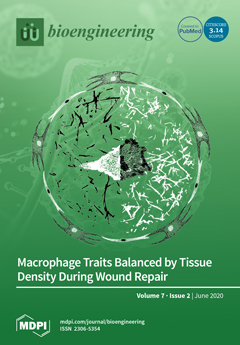Monocytes circulate in the bloodstream, extravasate into the tissue and differentiate into specific macrophage phenotypes to fulfill the immunological needs of tissues. During the tissue repair process, tissue density transits from loose to dense tissue. However, little is known on how changes in tissue density affects macrophage activation and their cellular functions. In this work, monocytic cell line THP-1 cells were embedded in three-dimensional (3D) collagen matrices with different fibril density and were then differentiated into uncommitted macrophages (M
PMA) using phorbol-12-myristate-13-acetate (PMA). M
PMA macrophages were subsequently activated into pro-inflammatory macrophages (M
LPS/IFNγ) and anti-inflammatory macrophages (M
IL-4/IL-13) using lipopolysaccharide and interferon-gamma (IFNγ), and interleukin 4 (IL-4) and IL-13, respectively. Although analysis of cell surface markers, on both gene and protein levels, was inconclusive, cytokine secretion profiles, however, demonstrated differences in macrophage phenotype. In the presence of differentiation activators, M
LPS/IFNγ secreted high amounts of IL-1β and tumor necrosis factor alpha (TNFα), while M0
PMA secreted similar cytokines to M
IL-4/IL-13, but low IL-8. After removing the activators and further culture for 3 days in fresh cell culture media, the secretion of IL-6 was found in high concentrations by M
IL-4/IL-13, followed by M
LPS/IFNγ and M
PMA. Interestingly, the secretion of cytokines is enhanced with an increase of fibril density. Through the investigation of macrophage-associated functions during tissue repair, we demonstrated that M1
LPS/IFNγ has the potential to enhance monocyte infiltration into tissue, while M
IL-4/IL-13 supported fibroblast differentiation into myofibroblasts via transforming growth factor beta 1 (TGF-β1) in dependence of fibril density, suggesting a M2a-like phenotype. Overall, our results suggest that collagen fibril density can modulate macrophage response to favor tissue functions. Understanding of immune response in such complex 3D microenvironments will contribute to the novel therapeutic strategies for improving tissue repair, as well as guidance of the design of immune-modulated materials.
Full article






